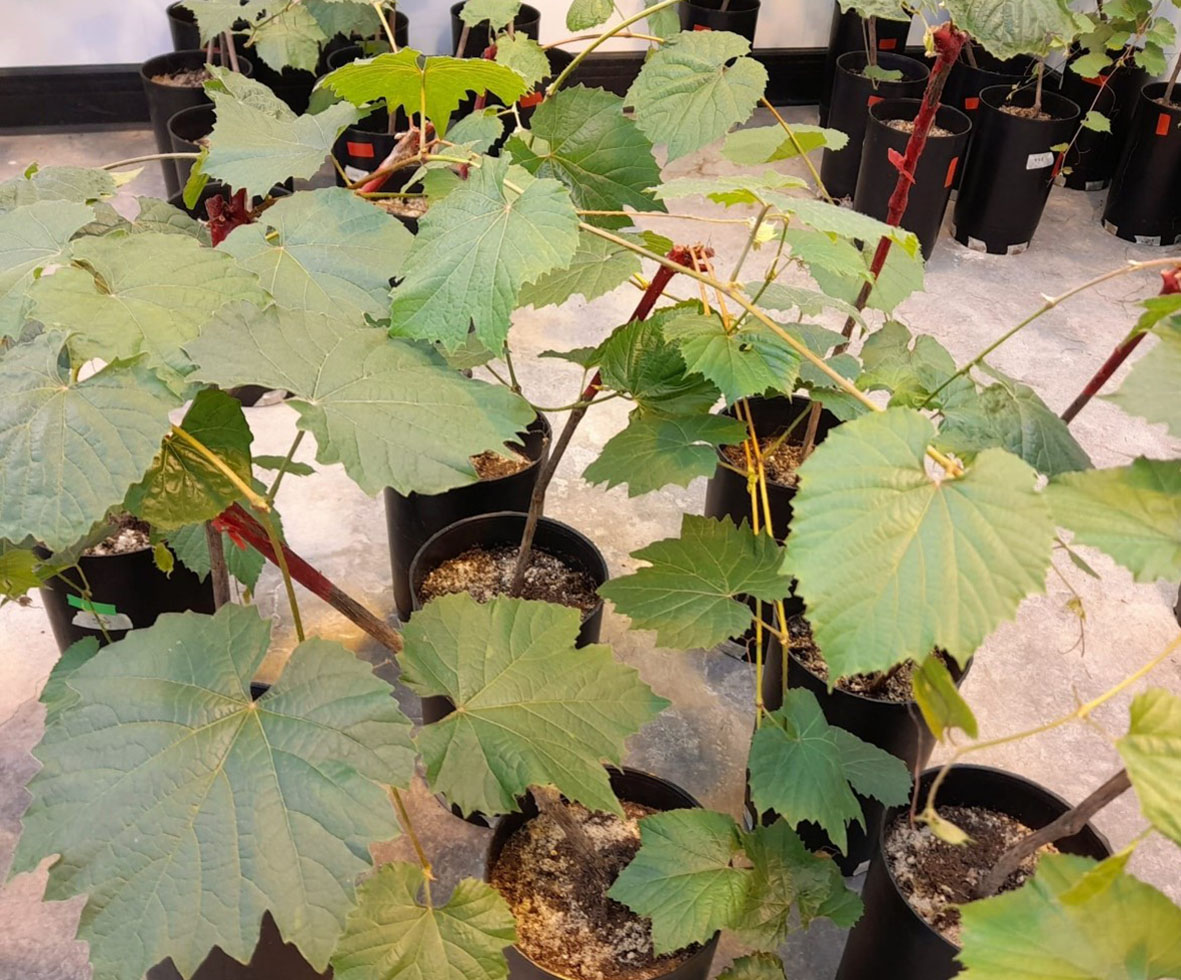Nemátodes da videira: quais são e como controlar - bibliografia
Por: Ivânia Esteves1, Carla Maleita1,2, Isabel Abrantes1
1 Laboratório de Nematologia (NEMATO-lab), Centre for Functional Ecology – Science for People & the Planet (CFE), Laboratório Terra, Departamento de Ciências da Vida, Faculdade de Ciências e Tecnologia, Universidade de Coimbra
2 Centro de Investigação em Engenharia dos Processos Químicos e dos Produtos da Floresta (CIEPQPF), Departamento de Engenharia Química, Faculdade de Ciências e Tecnologia, Universidade de Coimbra
Os nemátodes fitoparasitas (NFP) podem alimentar-se de diversas partes das plantas, compreendendo as raízes, podendo parasitar inúmeras culturas, incluindo a videira (Vitis vinifera L.), afetando a qualidade e o volume da colheita e a longevidade das cepas. Em Portugal, apesar de não existirem dados oficiais sobre o impacto dos NFP na videira, as espécies reconhecidas como tendo maior relevância pertencem aos géneros Meloidogyne (nemátodes- das-galhas-radiculares), Xiphinema (nemátodes-adaga), Pratylenchus (nemátodes-das-lesões-radiculares) e Mesocriconema (nemátodes-anelados). De seguida, apresentamos algumas informações gerais sobre a sua biologia, importância e estratégias de controlo, assim como algumas considerações sobre a relevância de monitorizar a fitossanidade da videira.

BIBLIOGRAFIA
ABALLAY, E., VILCHES, O. Resistance assessment of grapevine rootstocks used in Chile to the root-knot nematode Meloidogyne ethiopica, M. hapla, and M. javanica. Ciencia e Investigación Agraria 42 (2015), 407-413. https://doi.org/10.4067/S0718-16202015000300009
ABRANTES, I.M. De O., FARIA, C.A.T., SANTOS, M.S.N. De A. Root-lesion nematodes (Pratylenchus spp.) in Portugal. Nematologia Mediterranea 15 (1987), 375–378.
ABRANTES, I.M., VIEIRA DOS SANTOS, M.C., DA CONCEIÇÃO, I.L.P.M., SANTOS M.S.N. de A., VOLVAS N. Root-knot and other plant parasitic nematodes associated with fig trees in Portugal. Nematologia Mediterranea 36 (2008), 131–6.
DIAS, H.F. Host range and properties of grapevine fanleaf and grapevine yellow mosaic viruses. Annals of Applied Biology 51 (1963), 85–95.
ESTEVES, I., MALEITA, C., ABRANTES, I. Root-lesion and root-knot nematodes parasitizing potato. European Journal of Plant Pathology 141 (2015), 397-406.
INÁCIO, M.L., RUSINQUE, L.C., CAMACHO, M.J., NÓBREGA, F. First report of Mesocriconema xenoplax (Nematoda: Criconematidae) from turfgrass in Portugal and in Europe. Journal of Nematology 51 (2019), 1-6.
NICOL, J.M., STIRLING, G.R., ROSE, B.J., MAY, P., VAN HEESWIJCK, R. Impact of nematodes on grapevine growth and productivity: current knowledge and future directions, with special reference to Australian viticulture. Australian Journal of Grape and Wine Research 5 (1999), 109–127.
RASKI, D.J. On the morphology of Criconemoides Taylor 1936, with descriptions of six new species. Proceedings of Helminthological Society of Washington 19 (1952), 85-99.
RUSINQUE, L.C. VICENTE, C.S. INÁCIO M.L., NÓBREGA, F. CAMACHO, M.J. LIMA, A., RAMOS, A.P. First report of Pratylenchus penetrans (Nematoda: Pratylenchidae) associated with Amaryllis (Hippeastrum × hybridum), in Portugal. Plant Disease 104:10 (2020), 2740.
SANTOS, M. Degenerescência infeciosa: viroses da videira transmitidas por nemátodes. Vida Rural 1886 (2023), 72-77.
YANG, Y., HU, X., LIU, P., CHEN, L., PENG, H., WANG., Q., et al. A new root-knot nematode, Meloidogyne vitis sp. nov. (Nematoda: Meloidogynidae), parasitizing grape in Yunnan. PLoS ONE 16 (2021), e0245201. https://doi.org/10.1371/journal.pone.0245201
ZASADA, I.A., RIGA, E., PINKERTON, J.N., WILSON, J.H., SCHREINER, R.P. Plant-parasitic nematodes associated with grapevines, Vitis vinifera, in Washington and Idaho. American Journal of Enology and Viticulture 63 (2012), 522–528.